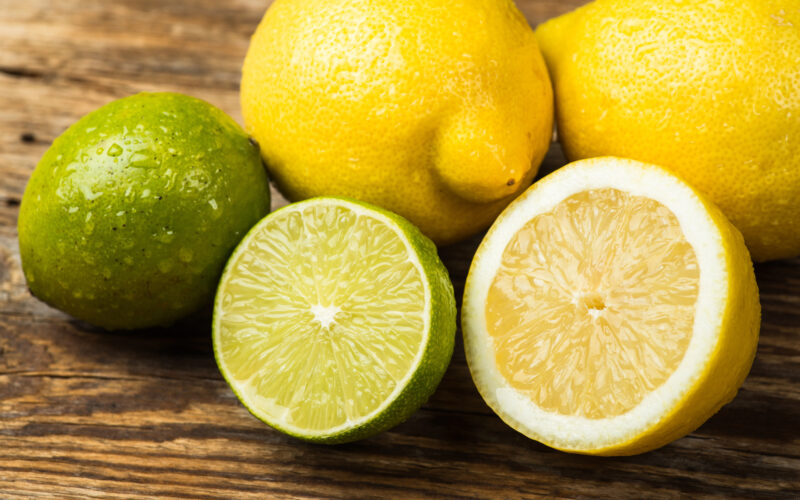Have you ever bitten into a juicy lemon and felt that tart zing on your tongue? That’s citric acid at work!
Many fruits contain this tangy compound, not just lemons. Citrus fruits like lemons, limes, oranges, and grapefruits have the highest amounts of citric acid.
But did you know that some non-citrus fruits also pack a citric acid punch? Strawberries, blackberries, and even tomatoes contain smaller amounts of this tart substance.
Citric acid gives fruits their sour taste and helps preserve them naturally.
You might wonder why citric acid matters in your diet. It’s not just about flavor – this compound can boost your health too! Citric acid helps your body absorb minerals better and may even prevent kidney stones.
So, next time you’re picking fruits at the store, remember that a little tartness can go a long way for your taste buds and your health.
Lemon

Lemons are one of the most acidic fruits you can find. They contain a high amount of citric acid, which gives them their signature sour taste.
A single lemon can have up to 5% citric acid by weight. This makes lemons a popular choice for adding tartness to foods and drinks.
You’ll find lemons used in many recipes, from savory dishes to sweet desserts. Their juice is often used as a natural preservative in foods.
Lemons are also rich in vitamin C. In fact, lemon juice contains 187% of the recommended daily value of this important nutrient.
When you eat or drink lemon, you’re getting more than just citric acid. Lemons also contain:
- Vitamin C
- Fiber
- Potassium
- Antioxidants
You can use lemons in many ways:
- Squeeze them into water for a refreshing drink
- Add zest to baked goods
- Use the juice in salad dressings
- Garnish seafood dishes
Remember, while lemons are very acidic, they can actually have an alkalizing effect on your body once metabolized.
Lime

Limes are small, green citrus fruits packed with citric acid. They have a tart, sour taste that adds zing to drinks and dishes.
You’ll find limes contain 4-5% citric acid by weight. This high level makes them one of the most acidic fruits you can eat.
Limes offer more than just a tangy flavor. They’re a good source of vitamin C, though not as high as some other citrus fruits.
A typical lime provides:
- 20% of your daily vitamin C needs
- Small amounts of calcium, potassium, and vitamin B6
You can use limes in many ways:
• Squeeze fresh lime juice into water or tea
• Add zest to baked goods
• Use in marinades for meat and fish
• Garnish cocktails and mocktails
Limes may help boost your health, too. They contain compounds that could:
- Support heart health
- Aid digestion
- Strengthen your immune system
When buying limes, pick ones that feel heavy for their size. A heavier lime usually means it’s juicier.
Look for bright green skin without blemishes for the freshest fruit.
Orange

Oranges are a popular citrus fruit that contains citric acid. You’ll find 0.08% to 1% citric acid in oranges.
This makes them less acidic than lemons or limes but still tangy.
The citric acid gives oranges their zesty flavor. It also helps preserve the fruit and adds to its nutritional value.
Oranges have a pH level of 3.69 to 4.34. This puts them in the acidic range, but they’re less acidic than many other citrus fruits.
When you eat an orange, you’re not just getting citric acid. These fruits are packed with:
- Vitamin C
- Fiber
- Potassium
- Antioxidants
The citric acid in oranges can be good for you. It may help boost iron absorption and support kidney health.
But if you have acid reflux, you might want to eat oranges in moderation.
You can enjoy oranges in many ways. Eat them fresh, drink the juice, or use them in cooking.
Their citric acid content makes them great for adding flavor to both sweet and savory dishes.
Grapefruit
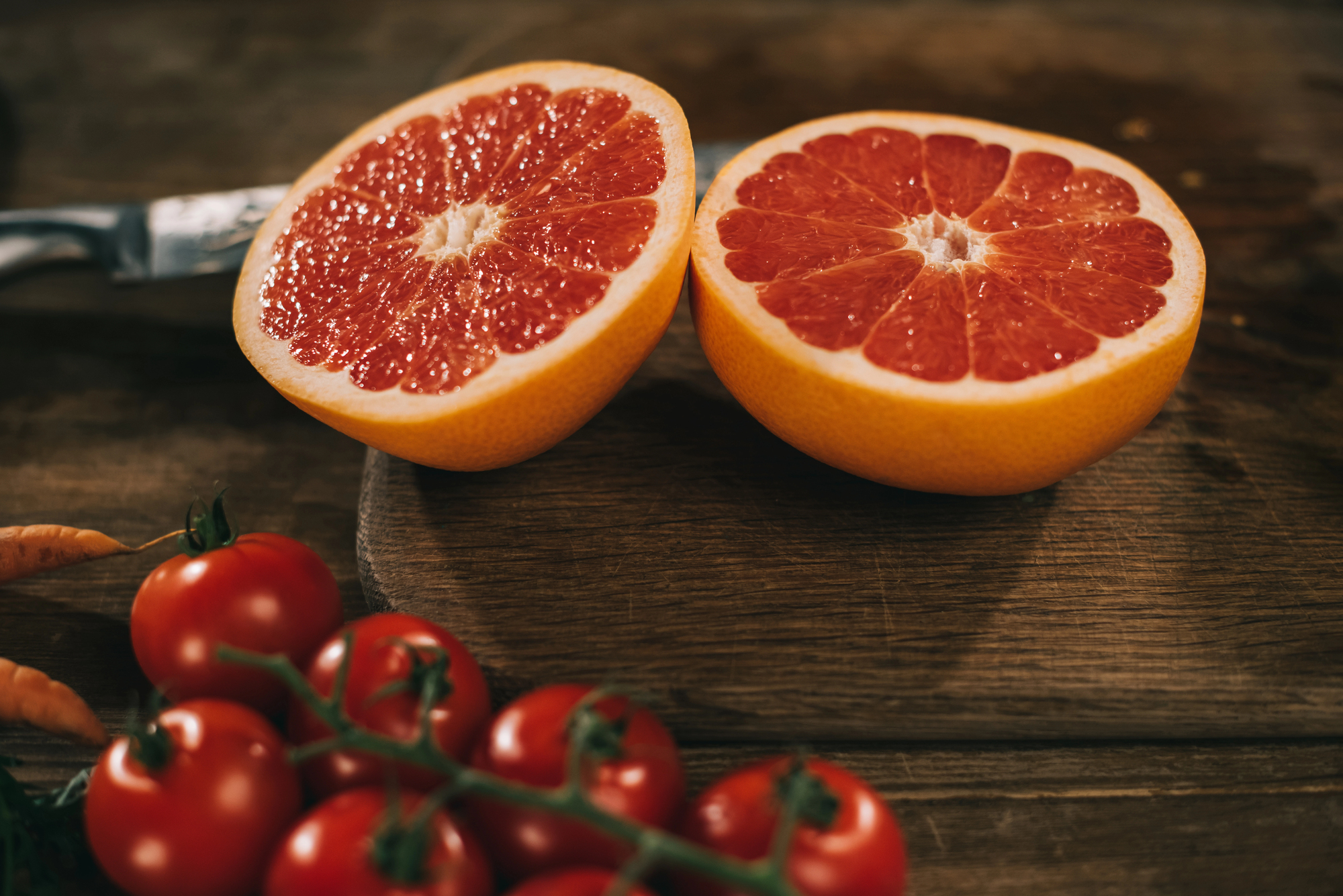
Grapefruit is a citrus fruit known for its tart and slightly bitter taste. You’ll find it’s packed with citric acid, making it one of the most acidic fruits you can eat.
The amount of citric acid in grapefruit varies, but it’s generally higher than in oranges.
This high acid content gives grapefruit its distinct flavor and makes it a popular choice for those who enjoy tangy foods.
Grapefruits come in different varieties, including:
- Pink
- Red
- White (or yellow)
Each type has a slightly different taste, but all contain significant amounts of citric acid.
When you eat grapefruit, you’re not just getting citric acid. You’re also getting a good dose of vitamin C, fiber, and other nutrients. This makes grapefruit a healthy addition to your diet.
You can enjoy grapefruit in many ways:
- Eat it fresh
- Drink the juice
- Add it to salads
- Use it in marinades
Remember, grapefruit can interact with certain medications. If you’re taking any prescription drugs, check with your doctor before adding grapefruit to your regular diet.
Tangerine

Tangerines are small, sweet citrus fruits that contain citric acid. You might know them for their bright orange color and easy-to-peel skin.
These fruits are a great source of vitamin C and other nutrients. They also have a good amount of citric acid, which gives them their tangy flavor.
While tangerines have less citric acid than lemons or limes, they still pack a flavorful punch.
You’ll find about 0.08% to 1% citric acid in tangerines, similar to oranges.
Here are some key facts about tangerines:
- They’re smaller and sweeter than oranges
- Their skin is looser and easier to peel
- They have a slightly flatter shape
- They’re often seedless or have few seeds
You can enjoy tangerines fresh as a snack or use them in recipes. Their juice and zest can add a citrusy flavor to both sweet and savory dishes.
Remember, tangerines are part of the citrus family. If you’re sensitive to citric acid, you might want to enjoy these fruits in moderation.
Clementine
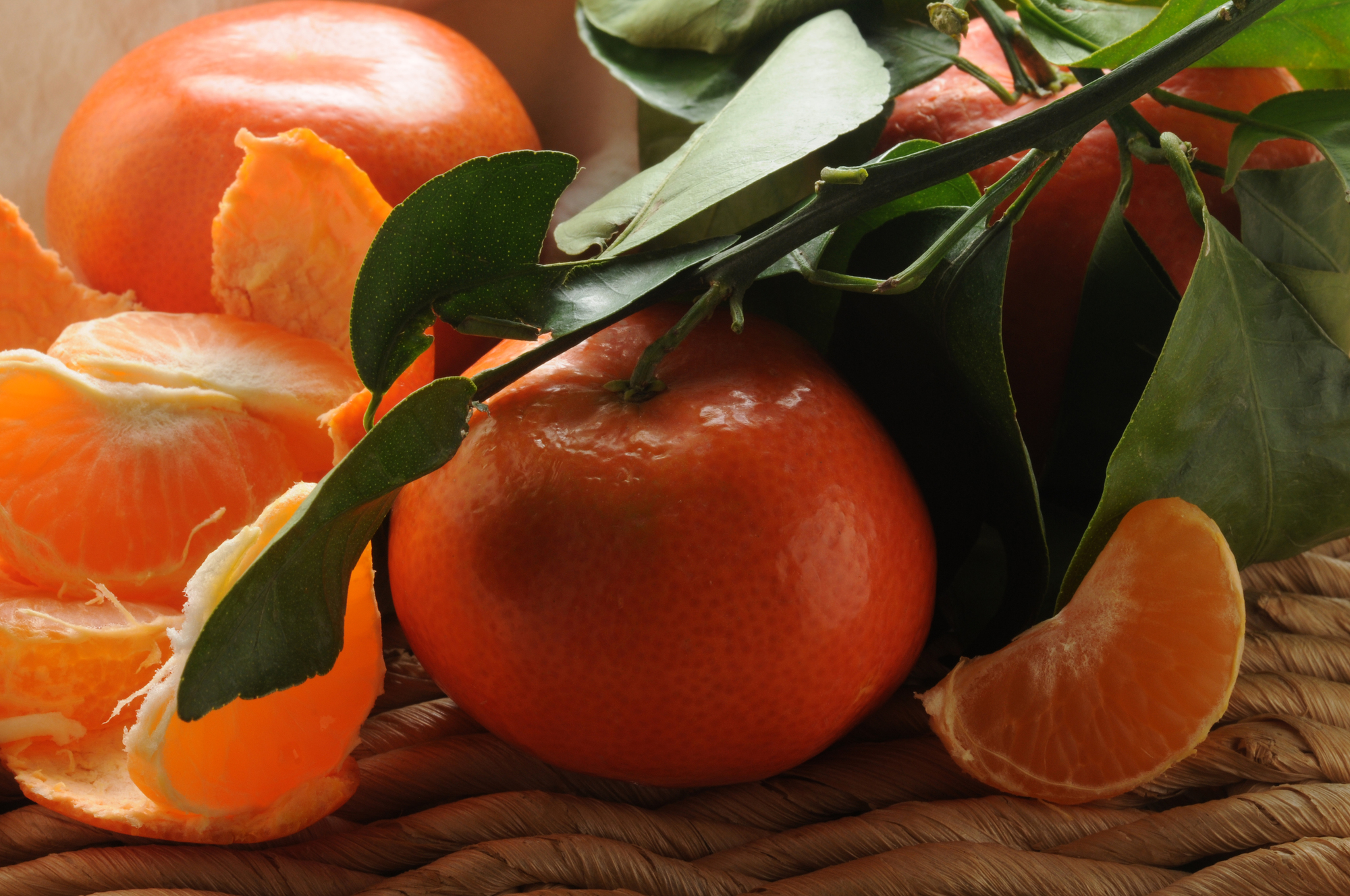
Clementines are small, sweet citrus fruits that contain citric acid. These tangy treats are about the size of a golf ball and pack a flavorful punch.
You’ll find that clementines are loaded with important nutrients. They’re low in calories but high in fiber and vitamin C. A single clementine (74 grams) contains:
- 34.8 calories
- 8.9 g total carbohydrates
- Vitamin C
- Potassium
- Folate
- Thiamine
Clementines have a lower acid content compared to other citrus fruits. This makes them a great choice if you’re looking for a milder citrus flavor.
You can easily peel and eat clementines as a quick snack. They’re also great in salads or as a garnish for desserts. Their sweet-tart flavor adds a bright note to many dishes.
These fruits are often available during winter months. You’ll find them in most grocery stores, usually sold in small wooden crates or mesh bags.
Try adding clementines to your diet for a tasty boost of vitamin C and other nutrients.
Their small size and easy-to-peel nature make them perfect for on-the-go snacking.
Pomelo
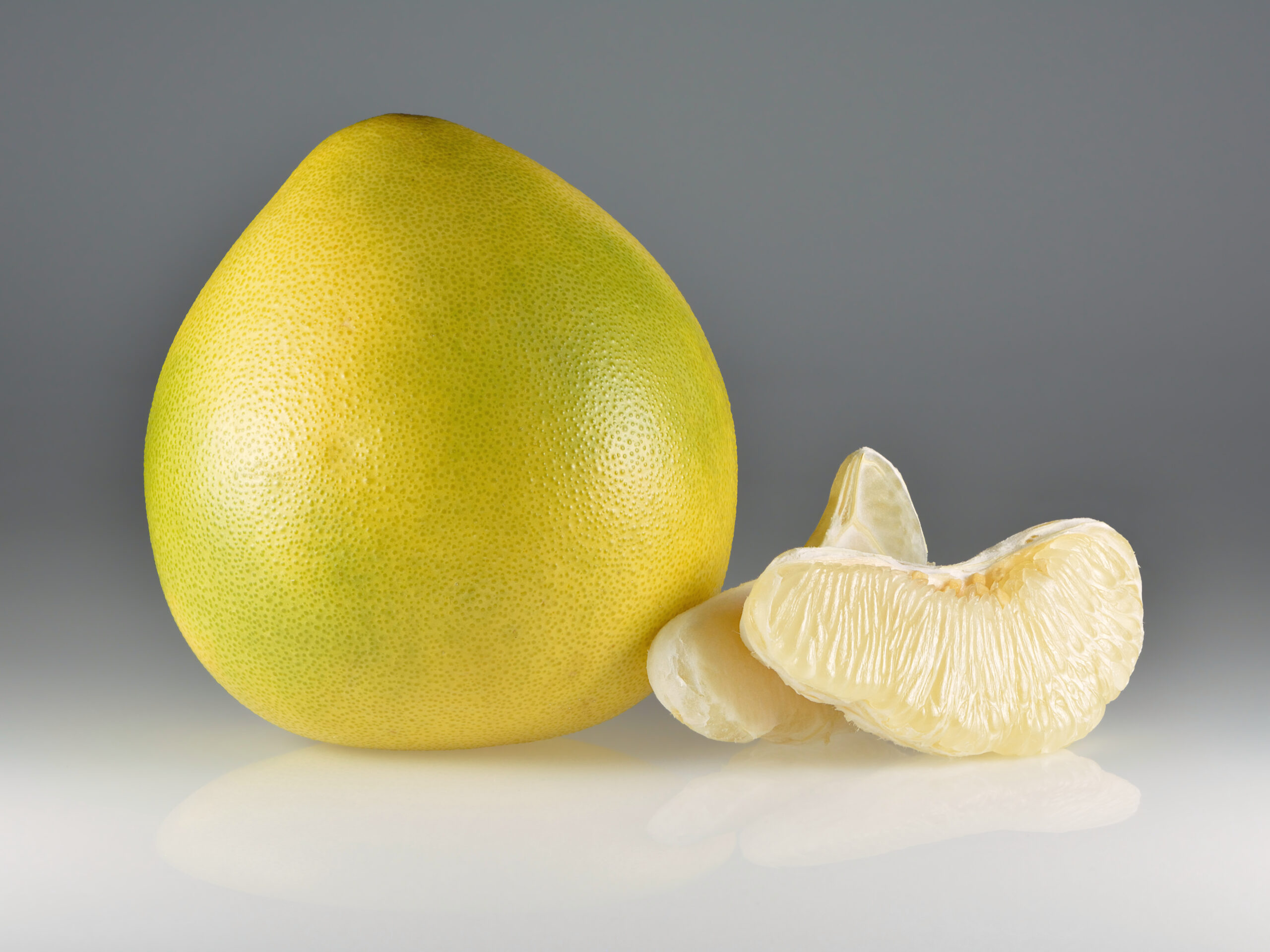
Pomelo is a large citrus fruit that contains citric acid. It’s related to grapefruits but has a milder, less bitter taste.
You’ll find that pomelos are packed with vitamin C. They contain over 400% of the daily value for this important nutrient. This makes pomelos great for supporting your immune system.
Pomelos have a unique texture. The flesh is firm and less juicy than oranges or grapefruits. You can eat it raw or use it in salads and desserts.
The fruit is also rich in other nutrients. It provides fiber, potassium, and antioxidants. These compounds can help protect your cells from damage.
When choosing a pomelo, look for one that feels heavy for its size. The skin should be smooth and free from blemishes.
To eat a pomelo, you’ll need to remove the thick rind and bitter white pith. Then, separate the segments and enjoy the juicy flesh inside.
Pomelos are versatile in the kitchen. You can use them in:
- Fruit salads
- Marinades for meat or fish
- Cocktails or mocktails
- Jams or preserves
Try adding pomelo to your diet for a tasty way to boost your citric acid and vitamin C intake.
Pineapple

Pineapple is a tropical fruit that contains citric acid. You might be surprised to learn that this sweet and tangy fruit is part of the citric acid family.
The citric acid in pineapple gives it a unique flavor profile. It’s what makes your mouth pucker a bit when you bite into a juicy piece. This acid also helps preserve the fruit’s freshness.
Pineapples are not just tasty, they’re good for you too. They contain:
- Vitamin C
- Manganese
- Fiber
- Bromelain (an enzyme)
You can enjoy pineapple in many ways. Try it fresh, grilled, or in a smoothie. It’s also great in savory dishes like pizza or stir-fry.
When picking a pineapple, look for one that smells sweet at the base. The leaves should be green and fresh-looking. A ripe pineapple will give slightly when you squeeze it.
Remember, the core of the pineapple is edible, too. It’s a bit tougher but packed with nutrients. You can blend it into smoothies or chop it finely for salads.
Strawberry

Strawberries are a surprising source of citric acid. You might think of lemons when you hear “citric acid,” but strawberries actually contain more citric acid than any other organic acid in their makeup.
When you bite into a strawberry, you’re tasting a mix of sweetness and tartness.
That tart flavor comes from the citric acid. It’s what gives strawberries their refreshing zing.
The citric acid in strawberries serves a purpose. It helps preserve the fruit and gives it that characteristic tangy taste you love.
This acid also contributes to the fruit’s overall nutritional value. You’ll find that strawberries are not just tasty but healthy too.
They’re packed with vitamin C, which is different from citric acid.
Both compounds contribute to the fruit’s acidic nature and health benefits.
Fresh strawberries are best for getting the most citric acid. When you’re choosing strawberries, look for bright red ones with a fresh, sweet smell. These will likely have the highest citric acid content.
Don’t forget that strawberry products like jams and juices also contain citric acid.
However, the amount may vary depending on processing methods and added ingredients.
Raspberry

Raspberries are a tasty fruit that contains citric acid. You might be surprised to learn that these berries have 0.6 grams of citric acid per 100 grams.
This amount is less than lemons or limes, but it still gives raspberries their tangy flavor.
The citric acid in raspberries helps keep them fresh and adds to their taste.
You can enjoy raspberries in many ways. Eat them fresh, add them to smoothies, or use them in baking.
Their bright red color and sweet-tart taste make them a great choice for desserts.
Raspberries are also good for you. They have lots of fiber and vitamin C. The citric acid in raspberries can help your body absorb iron better from other foods.
When you buy raspberries, look for firm, bright-colored berries. Avoid any that look mushy or moldy.
Store them in the fridge and eat them within a few days for the best taste and nutrition.
Blackberry

Blackberries might surprise you with their citric acid content. While not as tart as lemons or limes, these dark berries pack a flavorful punch.
Blackberries contain citric acid, contributing to their unique taste profile. The amount varies depending on the variety and growing conditions.
Some blackberry cultivars have impressive citric acid levels. For example, research shows that in certain types, citric acid makes up 41% to 70% of their total organic acids.
When you bite into a blackberry, you’re not just enjoying its sweetness. The citric acid gives it a slightly tart edge, balancing out the sugar content.
Blackberries offer more than just citric acid. They’re packed with:
- Vitamin C
- Fiber
- Antioxidants
You can add blackberries to your diet in many ways:
- Eat them fresh as a snack
- Mix them into yogurt or oatmeal
- Use them in smoothies or baked goods
By including blackberries in your meals, you’re getting a tasty dose of citric acid along with other health benefits.
Blueberry

You might be surprised to learn that blueberries contain citric acid. While they’re not as acidic as citrus fruits, blueberries do have a small amount of this tangy compound.
Blueberries have a unique flavor profile. They’re sweet with a subtle tartness that comes from their citric acid content. This balance makes them a favorite in many dishes.
The citric acid in blueberries helps preserve their freshness. It acts as a natural preservative, keeping the berries tasty for longer.
Nutritionally, blueberries are powerhouses. They’re packed with antioxidants and vitamins.
The citric acid in them helps your body absorb these nutrients better.
Here’s a quick breakdown of blueberry acidity:
- pH level: Around 3.1 to 3.4
- Citric acid content: Lower than citrus fruits
- Taste: Sweet with a mild tart note
You can enjoy blueberries in many ways:
- Fresh as a snack
- Baked into muffins or pies
- Blended into smoothies
- Added to yogurt or oatmeal
Remember, while blueberries do contain citric acid, they’re generally considered less acidic than many other fruits.
This makes them a great choice if you’re looking for a gentler fruit option.
Kiwi
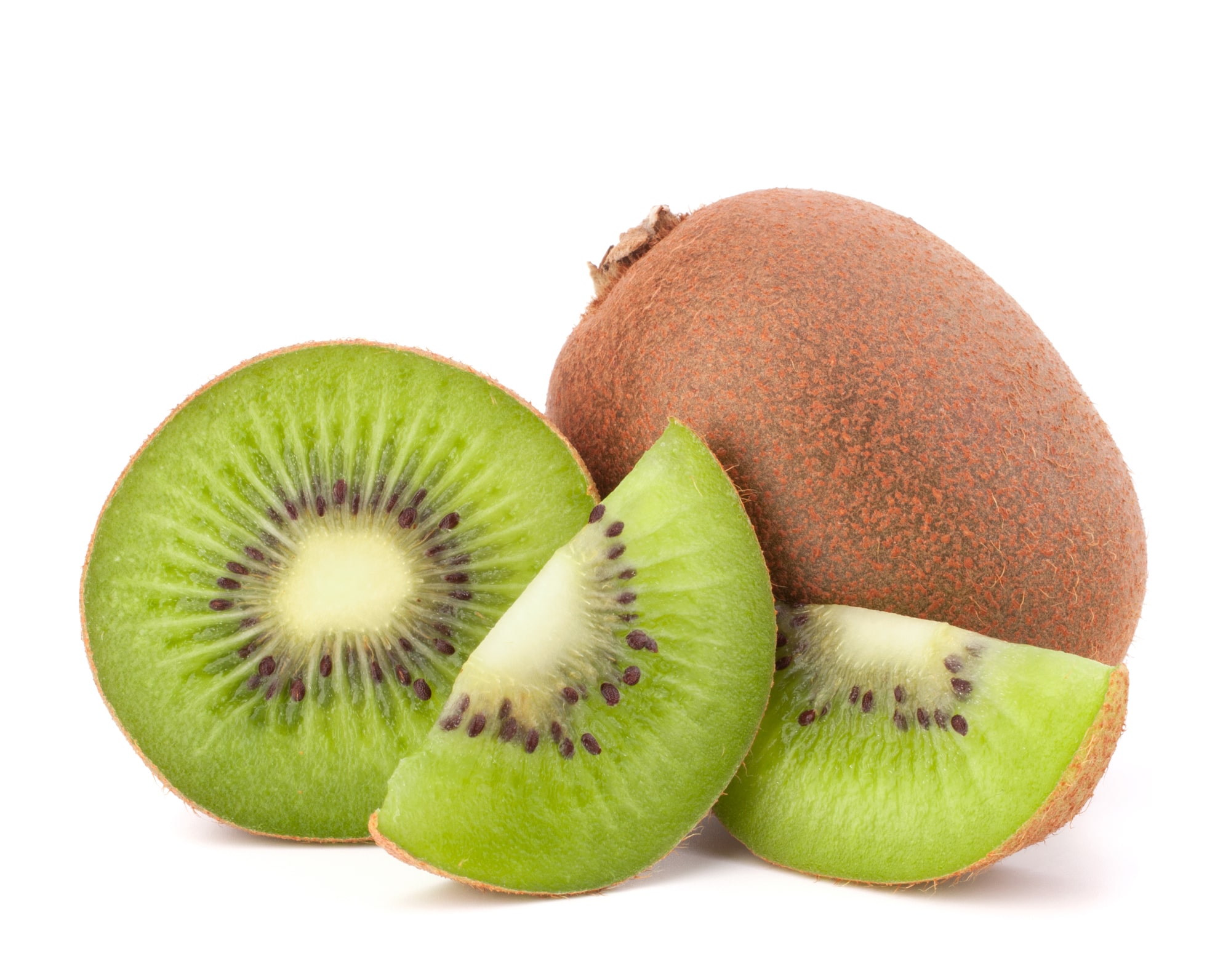
Kiwi is a unique fruit that many people wonder about. Is it a citrus fruit? The answer is no.
While kiwis do contain some citric acid, they are not classified as citrus fruits.
Kiwis have a mix of acids that give them their tangy flavor. These include citric acid, malic acid, and quinic acid.
The amount of citric acid in kiwis is much lower than in true citrus fruits like lemons or oranges.
You might notice that kiwis taste less tart than lemons or limes. This is because they have less citric acid.
The more citric acid a fruit has, the sharper and more tart it tastes.
Kiwis are different from citrus fruits in other ways, too. Their peel is fuzzy and brown, unlike the bright, smooth peels of oranges or lemons.
Inside, kiwis have small black seeds and a bright green flesh. If you have acid reflux, be careful with kiwis.
Their acidity might cause issues if you eat too many. But in small amounts, some people find kiwis can actually help with mild heartburn.
Cranberry
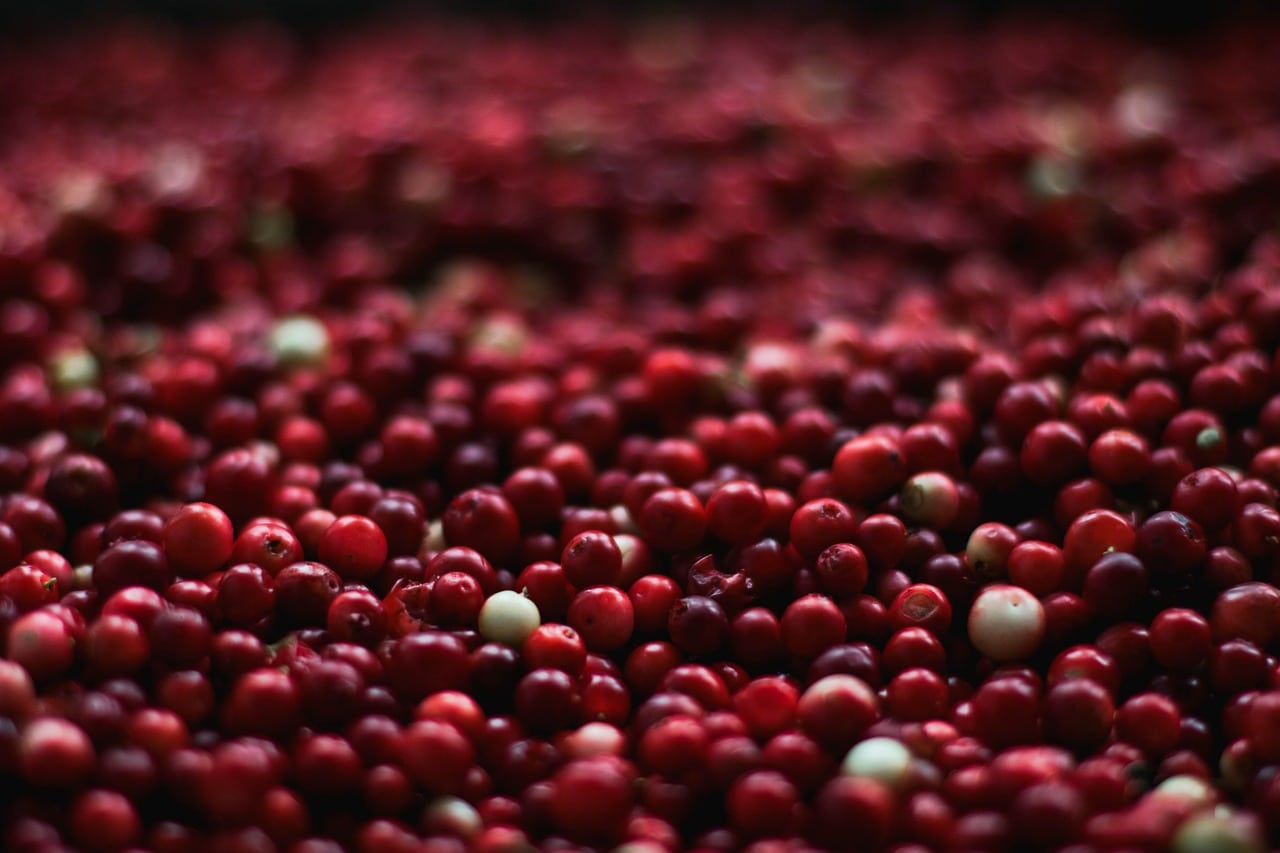
Cranberries are a tart fruit that might surprise you with their citric acid content.
While they don’t have as much as lemons or limes, cranberries do contain a small amount of this tangy compound.
In a 6-ounce serving of cranberry juice cocktail, you’ll find about 0.28 grams of citric acid.
This is much less than what you’d get from citrus fruits, but it still contributes to the berry’s signature tartness.
Cranberries also contain other acids that give them their unique flavor profile:
- Ascorbic acid (vitamin C)
- Malic acid
- Quinic acid
These berries are more than just their acidic taste. You’ll find that cranberries are packed with nutrients and health benefits:
Nutritional Content:
Cranberries can be enjoyed in various forms. You might like them fresh, dried, or as juice. They’re often used in sauces, baked goods, and even as a garnish for cocktails.
Remember, while cranberries do have citric acid, it’s in smaller amounts compared to citrus fruits.
Their tartness comes from a combination of different acids, making them a unique and flavorful addition to your diet.
Cherry

Cherries are a tasty fruit that contain citric acid. You might be surprised to learn that these small, round fruits aren’t just sweet – they’re also a bit tart.
The amount of citric acid in cherries is lower than in citrus fruits. But it still adds to their flavor and helps keep them fresh.
There are different types of cherries:
- Sweet cherries
- Sour cherries
- Black cherries
Sour cherries have more citric acid than sweet cherries. This gives them their tangy taste that you might love in pies or jams.
Cherries are good for you too. They have vitamin C and other nutrients. The citric acid in cherries helps your body absorb these nutrients better.
You can enjoy cherries in many ways. Eat them fresh, use them in baking, or drink cherry juice. Each way lets you taste their unique mix of sweet and tart flavors.
Remember, while cherries have citric acid, they’re not as acidic as lemons or limes. This makes them a milder option if you want fruit with a hint of tartness.
Pomegranate

Pomegranates are not citrus fruits. They belong to a different plant family called Lythraceae.
Unlike citrus fruits, pomegranates contain mostly oxalic acid, punicic acid, and tartaric acid.
While pomegranates do have some citric acid, the amount is very small. Pomegranate juice only contains 0.1 gram of citric acid per 100 ml.
This is much less than citrus fruits like lemons, which have 5-8% citric acid.
You can tell pomegranates apart from citrus fruits by their:
- Thick, leathery skin
- Edible seeds called arils
- Sweet-tart flavor profile
Pomegranates have a unique mix of acids that give them their tangy taste. The main acids in pomegranates are:
- Oxalic acid
- Punicic acid
- Tartaric acid
These acids contribute to the fruit’s flavor and health benefits. Pomegranates are known for their antioxidant properties and potential health benefits.
When you eat pomegranates, you’re getting a different taste experience than with citrus fruits.
The sweet-tart flavor comes from its unique acid profile rather than high citric acid content.
Gooseberry

Gooseberries are small, round fruits that pack a tangy punch. You might be surprised to learn they’re a great source of citric acid.
These tart berries contain 11-14 mg of citric acid per 100 grams of fruit. That’s quite a lot for such a tiny package!
But citric acid isn’t the only thing gooseberries have to offer. They’re also rich in:
- Vitamin C
- Fiber
- Antioxidants
Gooseberries come in different colors. Green ones are usually more sour, while red or purple varieties tend to be sweeter.
You can eat gooseberries raw, but many people prefer to cook them. They make great jams, pies, and sauces.
If you’re looking to add more citric acid to your diet, gooseberries are a tasty option. They’re not just sour – they’re packed with health benefits, too.
Try adding some gooseberries to your next fruit salad or smoothie. You’ll get a zesty kick and a boost of nutrients all in one!
Tomato
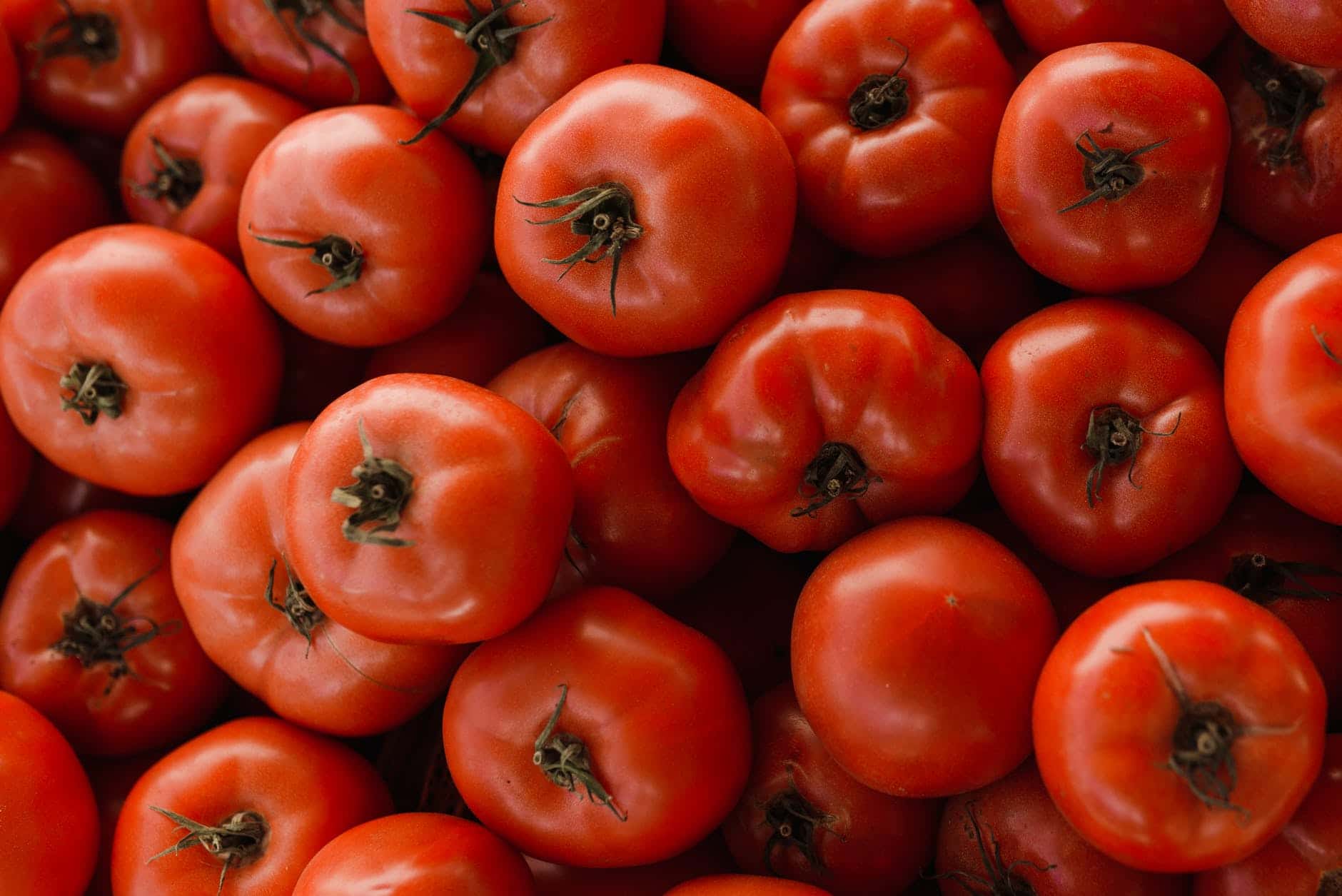
You might be surprised to learn that tomatoes contain citric acid. While not as high as citrus fruits, tomatoes do have citric acid. This gives them their slightly tart flavor.
Fresh and canned tomatoes both have citric acid. The same goes for tomato-based products like juices and sauces.
Tomatoes typically have a pH level between 4 and 4.6. This makes them mildly acidic. The acidity in tomatoes comes from two main sources:
- Citric acid
- Malic acid
When you eat tomatoes, you’re getting a mix of these acids. They contribute to the fruit’s tangy taste and help preserve it.
If you have acid reflux, you might want to be careful with tomatoes. Their acidity can sometimes trigger symptoms in sensitive people.
Remember, the amount of citric acid in tomatoes is much lower than in lemons or limes. So you can still enjoy tomatoes as part of a balanced diet.




